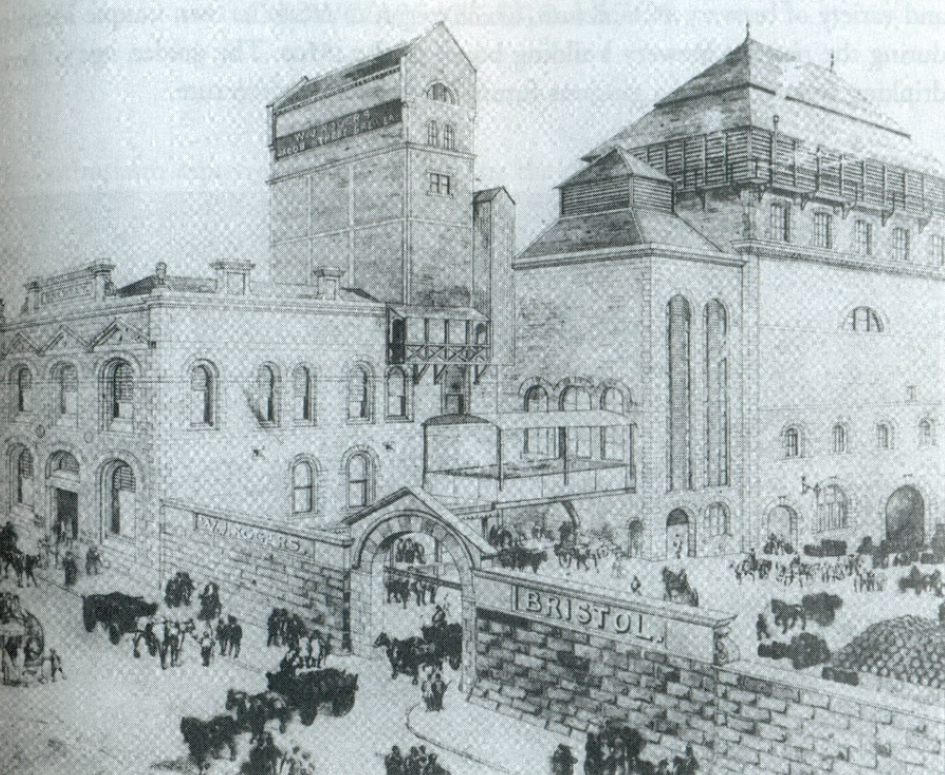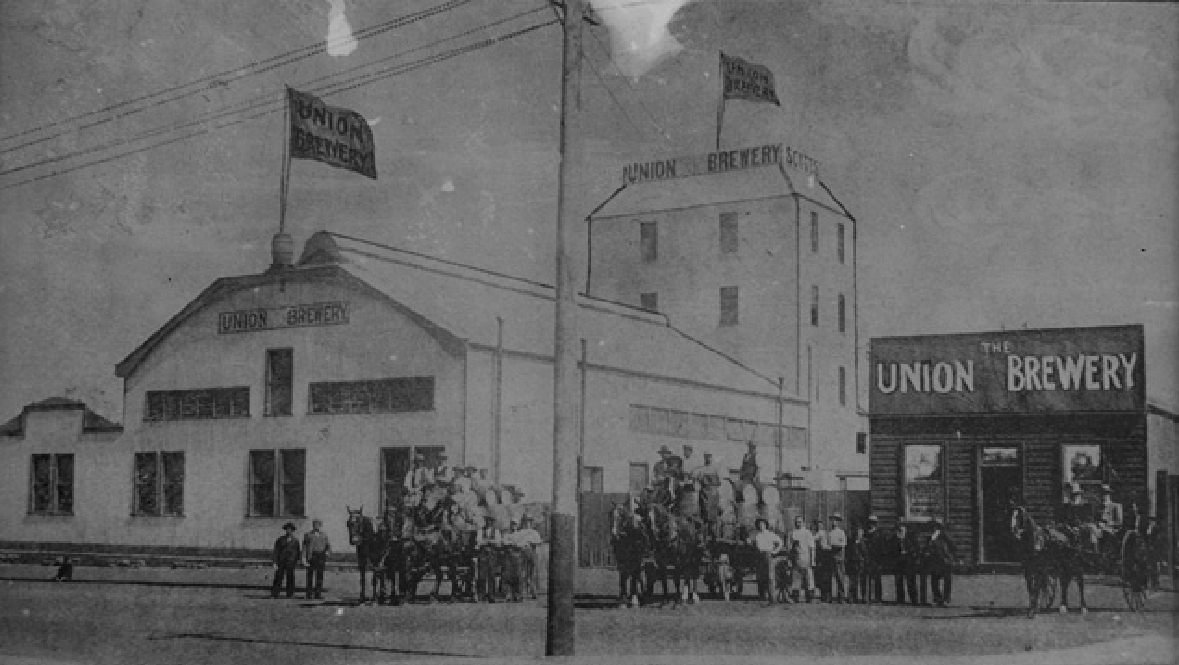
A Brewing Life: James Liddington (1856–1907)
Frequently during the course of my ongoing research into the Australian brewing industry I come across a brewer whose life and career seem to be sufficiently interesting to demand closer investigation than is immediately necessary. Occasionally I allow myself the time to be diverted. James Liddington is one such brewer, and the following is the result of one irresistible diversion.
I first came across Liddington several years ago when writing a history of brewing in early Queensland (Beer, Mines and Rails); Liddington had posts in that colony in the 1880s and 1890s. I re-encountered him recently at Hay in New South Wales. He became a particularly eligible subject for closer examination when I realised that he shares a surname with a much earlier Australian brewer, Arthur Liddington, who was active in the Sydney area in the 1830s and 1840s. I supposed that there might be a discoverable family connection.
James Liddington was the typical peripatetic brewer, roving widely and never remaining at one post for long, adding colour to his career by his wanderings, but difficulty to my research. He had been born in 1856 into a brewing family, his grandfather, Seabrook Liddington (born 1808), and his father, James (born 1832), having in succession run the Manor Brewery at Tring in Hertfordshire, England.
After finishing his schooling in 1871, young James studied brewing at his father’s establishment, then was articled to W. J. Rogers at his Jacob Street Brewery in Bristol. His first proper job was as second brewer at the Tangier Brewery at Taunton in Somerset.
Liddington’s first colonial appointment was in Christchurch, New Zealand, where he went in 1879. He married there in June 1883, and returned to England in 1884 with his wife, Alice. When James was back in England, his father died—in 1885 aged only in his fifties—leaving his mother, Rebecca, to run the family brewery and its small tied estate. His grandfather, Seabrook, was retired by that time, but did not expire until 1903, at the age of 94 years.
In May 1886, presumably after helping his widowed mother to get family affairs in order, James and his wife sailed for Sydney as Government-assisted immigrants on the new steamship Port Victor. They arrived in Sydney in July after a passage of seven weeks from Plymouth, including a dangerously stormy leg from the Cape of Good Hope.
The arrival of the Port Victor was much celebrated in Sydney. The ship carried 644 English, Irish and Scotch immigrants, including 58 married couples. The men were principally farm and other labourers, and the women mostly domestic servants, but a wide range of much-needed skilled trades were also represented, including at least one brewer.
Liddington’s first Australian brewing position was probably at the newly-founded (1886) Valley Brewery in Brisbane; when he gave expert evidence at a court hearing in Brisbane in May 1887, he had already left his position with that enterprise. The interesting court case concerned a suspect coil of copper tubing, and whether it was intended for use in a still (illegal) or a brewery (legal).
The death of Liddington’s young wife at Brisbane in August 1887 may have set him a-wandering. He married again at Townsville in January 1889, and was appointed brewer at Ralph Clifton’s Anchor Brewery near Charters Towers late that year. He was at the Anchor in March 1890 when the brewery and his residence were both inundated by the Burdekin River, and in May the same year when the brewery was completely destroyed by fire.
Probably before (but maybe after) his stint at the Anchor Brewery, he brewed briefly at Peter Martin’s New City Brewery in Townsville. There he acquitted himself well, earning a reputation as the only brewer to have produced drinkable beer at Martin’s brewery. Others had blamed the water, but Liddington’s success seemed to let the water off the hook.
Liddington left the northern colony early in 1891 and returned to Sydney, now with a new wife, Caroline, and two infant children. They travelled on the coaster Arawatta, which completed the sea passage from Townsville to Sydney snappily in a week.
Beginning in 1891, western New South Wales was Liddington’s home for about five years. He brewed for Jones, Lincoln and Co. at Narrandera for a short time, then left there early in 1892 to fill the role of brewer and manager to Lindsay’s Brewery Company Limited at Hay, presumably a more responsible and lucrative position.
Liddington remained with Lindsay’s Brewery Company for more than four years, albeit at two different branches. Lindsay’s brewery at Hay had been completely destroyed by fire in 1891, and was promptly rebuilt. Liddington therefore moved into an essentially brand new brewery. He remained at Hay for two years until transferred to Bourke to manage Lindsay’s branch there.
Late in 1896, after more than two years at the Bourke branch, Liddington moved to Western Australia, probably encouraged by the fact that his cousin, Arthur Liddington, a school teacher, was already living in that distant colony. He sailed in November 1896, and was followed by his wife and children in January 1897 after he had settled into a new job. He had taken the position of brewer for the West Australian Brewery Co. Limited at their newly-erected premises at Burswood, South Perth.
In August 1897 Liddington took a more prestigious position with the longer-established Stanley Brewery Co. Limited, Mount’s Bay Road, Perth. He remained there for more than six years, the longest posting by far of his remarkably mobile career.
Liddington severed his connection with the Stanley Brewery in November 1903 and returned to his former employer, the W. A. Brewery Co. Limited at Burswood. Late in 1904, that company purchased the Perth Brewery at East Perth, then closed and sold its original premises at Burswood, so Liddington moved again, to the site of the new acquisition.
Early in 1906, Liddington was again on the move, having taken an appointment at the Union Brewery at Kalgoorlie to replace the previous brewer, Herbert Haig, who had recently died. At Kalgoorlie, one of Liddington’s first and most important tasks was to get into full working order the machinery of the modern and extensive Federation Bottling Works, which the brewery had recently acquired and would henceforth use solely for bottling its own ale and stout.
After little more than a year at the Union Brewery, Liddington also passed away, after what was described as a prolonged illness. He was only 50 years of age. This gave the Union Brewery a dreadful record, as it had lost three brewers through death in four years: Liddington in 1907, Haig in 1906, and Philip Hardwick, Haig’s immediate predecessor, in 1903. Hardwick, by the way, had been a predecessor of Liddington at Lindsay’s Brewery at Bourke in New South Wales.
James Liddington’s elder son, James Arthur Liddington, perpetuated the family brewing tradition by pursuing a brewing career at his father’s final post, the Union Brewery, Kalgoorlie.
The early Sydney brewer named Arthur Liddington, whom I mentioned at the beginning of this essay, was briefly the proprietor of the Union Brewery in Pitt Street, Sydney, in the 1830s. He subsequently ran a brewery on his farm at Bringelly, in western Sydney, near Penrith, in the early 1840s. Born in 1804, Arthur Liddington had come to Australia in 1823 as a free settler, and a youthful one at that, and died on his farm at Bringelly at the age of very nearly 92 years.
Besides his surname, there are several factors that together suggest a family connection between Arthur and James: their shared interest in brewing, Arthur’s longevity (remember, James’s grandfather, Seabrook, lived to the age of 94), and the recurrence of Arthur as a given name in the Liddington family.
So, is there a family connection between James and Arthur? If there is, it was a long time back, and I have not yet found it. Maybe there is a Liddington descendant among the Brews News readership who knows something that will ease the burden of my further investigations.





